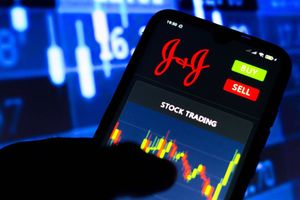
The cryptocurrency market is abuzz with renewed optimism surrounding Ripple's (XRP) digital asset, as a confluence of bullish price predictions, notably a $5 target on the prediction market Kalshi, and significant whale movements signal a potential parabolic run. As of September 28, 2025, a massive acquisition of 17.5 million XRP by a Kraken whale has further fueled speculation, suggesting institutional and high-net-worth investors are positioning themselves for substantial gains.
This surge in positive sentiment comes amidst a broader anticipation of regulatory clarity and the increasing likelihood of a spot XRP Exchange Traded Fund (ETF) approval, setting the stage for a potentially transformative period for XRP and the wider crypto ecosystem. The market is closely watching whether these catalysts can propel XRP towards its ambitious price targets, challenging its historical price ceilings and cementing its role in the future of global finance.
Detailed Coverage: The Catalysts Behind XRP's Ascent
The recent bullish momentum for XRP has been building throughout September 2025, culminating in significant developments by the month's end. Prediction markets like Kalshi have become a barometer for investor sentiment, with data on September 28, 2025, showing a notable 3% increase in bets on XRP reaching $5 by year-end, even as lower targets saw reduced interest. This follows earlier indications around September 25, where Kalshi already reflected a 17% chance of XRP surpassing the $5 mark within the year. Analyst firms like CoinDCX, Blockchain Reporter, and Trading News have echoed this optimism, with some projecting XRP could hit $4.50-$5.00 by late 2025, especially if it breaks key resistance levels like $3.25. Even more aggressive forecasts, fueled by AI models from CoinCentral and ChatGPT, envision XRP reaching $5-$22, citing institutional interest and tokenization adoption.
Adding substantial weight to these predictions are the observable "whale" movements—large transactions by significant holders. A particularly striking event on September 28, 2025, saw an unnamed whale investor acquire a colossal 17,555,420 XRP, valued at approximately $48.9 million, via the Kraken (KRAK) exchange before transferring it. This single transaction is widely interpreted as a strong signal of confidence in XRP's future trajectory. This isn't an isolated incident; throughout September, wallets holding between 1 million and 10 million XRP collectively purchased around 30 million XRP in a single day, valued at approximately $86 million, indicating a strategic accumulation by large players during price dips.
The market has also been impacted by broader institutional maneuvering. Coinbase's (COIN) cold wallets, which held nearly 970 million XRP in June 2025, showed zero XRP by late September, suggesting a significant shift of tokens to institutional players, over-the-counter (OTC) desks, and private wallets in anticipation of ETF approvals. Furthermore, the recent launch of Rex-Osprey's Spot XRP ETF, which recorded $37.7 million in trading volume on its first day, has provided a strong foundation for XRP to test higher resistance and potentially reach a $10 target before year-end, according to analysts. The CME Group's (CME) upcoming XRP options launch on October 13 further underscores the growing institutional interest and the increasing sophistication of XRP's financial derivatives market.
The immediate market reaction, as of September 28, 2025, shows XRP demonstrating resilience, rebounding 4% from its $2.74 lows to reclaim the $2.80 support level, outperforming Bitcoin and Ethereum which remained subdued. While consolidating within the $2.90–$3.07 range in early September, XRP was testing a critical $2.70 support level by late September. Analysts suggest that defending this level could pave the way for a rebound towards $2.95–$3.25, with the ultimate target of $5. The strong likelihood of a spot XRP ETF approval, currently at 93-95% on Polymarket, remains a key catalyst, promising to unlock significant institutional capital.
Companies Set to Win or Face Challenges in the XRP Surge
The escalating optimism around XRP's price and its increasing institutional adoption are creating distinct winners and posing challenges for others in the financial landscape. Foremost among the beneficiaries are companies with direct XRP holdings or deep integration into the Ripple ecosystem. SBI Holdings (Japan), as the largest institutional XRP holder with an estimated $10 billion worth of XRP and a major equity investor in Ripple Labs, stands to gain immensely. Their strategic use of XRP in cross-border payments through SBI Remit, coupled with their recent Memorandum of Understanding (MOU) with Ripple for the USD-backed stablecoin RLUSD in Japan, positions them for significant upside.
Several public companies have also strategically allocated XRP to their corporate treasuries, directly linking their balance sheets to XRP's performance. These include Trident Digital Tech Holdings (Singapore), planning a $500 million XRP treasury; Webus International with a $300 million mandate; VivoPower International PLC (NASDAQ: VVPR) with $121 million raised for XRP reserves; Wellgistics Health, Inc. (NASDAQ: WGRX) with a $50 million credit facility for XRP; Hyperscale Data Inc. (NYSE American: GPUS) with a $10 million XRP investment; Nature's Miracle Holding Inc. (OTCQB: NMHI) allocating up to $20 million; Amber International Holdings with a $100 million crypto reserve plan including XRP; and Worksport Ltd (NASDAQ: WKSP) with a six-figure investment. Asset managers like Canadian 3iQ and Purpose ETF also hold substantial XRP, directly benefiting from price appreciation.
Cryptocurrency exchanges and service providers are also poised for gains. Coinbase Global, Inc. (NASDAQ: COIN) would see increased trading volume and demand for custody services, especially from ETF issuers. BNY Mellon, appointed as the primary custodian for Ripple USD (RLUSD), stands to benefit from the stablecoin's adoption. Similarly, BDACS (South Korea), offering XRP custody services, would see increased demand. Financial institutions and asset managers involved in XRP ETFs are clear winners; Hashdex, whose Nasdaq Crypto Index US ETF now holds XRP, and REX-Osprey with its newly launched Spot XRP ETF (XRPR), will see increased Assets Under Management (AUM). Grayscale Investments (OTCQX: GBTC), having received approval for its XRP ETF on September 22, 2025, and including XRP in its Digital Large Cap Fund, is set for substantial AUM growth. The CME Group (CME), launching XRP options, will benefit from increased institutional trading. Partnerships like DBS and Franklin Templeton with Ripple, offering tokenized money market funds on the XRP Ledger, will also see their initiatives validated and potentially expand. Morgan Stanley, while indirectly, could benefit from increased demand for crypto trading among its ETrade clients, given its positive analysis of Ripple.
Conversely, companies that have taken short positions on XRP would face losses. Traditional financial institutions or tech companies that have avoided engagement with XRP or the broader crypto market might face competitive disadvantages, losing out on new revenue streams as their peers embrace digital assets. Companies heavily invested in legacy, slower, and more expensive remittance infrastructure, like some traditional banks and payment processors, could face increasing pressure to adapt or risk losing market share to more efficient blockchain-powered solutions. While not directly a "loss," the increasing prominence of Ripple's own stablecoin, RLUSD, could potentially divert some utility away from XRP as a bridge asset, impacting its direct price appreciation in certain scenarios, although it generally strengthens the overall Ripple ecosystem.
Wider Significance: XRP's Role in a Maturing Crypto Landscape
The recent surge in XRP forecasts and significant whale movements around September 28, 2025, are not isolated incidents but rather critical indicators of broader trends shaping the cryptocurrency industry. This event underscores the accelerating institutional adoption of digital assets, driven by increasing regulatory clarity and technological advancements. The successful launch of XRP ETFs, such as the REX-Osprey Spot XRP ETF (XRPR) and the approval of Hashdex's Nasdaq Crypto Index US ETF, which now includes XRP, are testament to growing institutional confidence, further legitimizing crypto as an investable asset class.
This period also highlights the market's maturation and specialization. XRP, specifically designed for cross-border payments, exemplifies the success of blockchain solutions addressing real-world financial problems. Its utility in reducing costs and speeding up international transfers through RippleNet reinforces the growing importance of hybrid financial models where digital assets seamlessly integrate with, rather than entirely replace, legacy systems. The continuous large-scale whale movements, both accumulation and occasional sell-offs, further emphasize the ongoing influence of large holders in shaping market dynamics, even as the market becomes more institutionally driven.
The regulatory and policy implications of XRP's journey are profound. The resolution of the U.S. Securities and Exchange Commission (SEC) vs. Ripple lawsuit in August 2025, which confirmed XRP is not a security in secondary market transactions, is a watershed moment. This precedent-setting clarity has de-risked XRP and provides a potential roadmap for other altcoins seeking clear regulatory frameworks. It signals a shift in the SEC's approach under a more crypto-friendly chairman, Paul Atkins, and the "Project Crypto" initiative, indicating that clarity can foster innovation rather than stifle it. Globally, while jurisdictions like Europe with MiCAR are providing unified frameworks, the U.S. clarity for XRP could spur other nations to develop similar, growth-oriented regulations.
Historically, XRP's current situation draws parallels to Bitcoin's institutional rallies following spot ETF approvals in early 2024, demonstrating how regulatory clarity and institutional capital can significantly boost an asset's value. It also mirrors previous altcoin surges driven by technological utility and ecosystem growth, but with the unique catalyst of a major legal victory. The "relief rally" observed post-SEC settlement underscores how resolving regulatory overhangs can unlock substantial investor confidence and capital. The ongoing influence of whale activity, while more sophisticated in a maturing market, harks back to earlier crypto cycles where large transactions significantly impacted price, reminding us of the persistent power of concentrated holdings.
What Comes Next: Navigating XRP's Future Trajectory
The immediate and long-term future for Ripple (XRP) is poised for significant developments, driven by a confluence of regulatory milestones, strategic adaptations, and market dynamics. In the short term, leading into late 2025 and early 2026, the primary catalysts will be the anticipated approvals of spot XRP Exchange-Traded Funds (ETFs). With over a dozen applications under review and Bloomberg analysts estimating an 85% to 95% approval probability, positive decisions could dramatically increase liquidity and institutional accessibility, potentially propelling XRP towards initial price targets of $3.60 to $5. The upcoming launch of XRP options on the CME Group (CME) on October 13, 2025, will also add a new layer of institutional derivatives trading, further influencing short-term market dynamics.
Looking further ahead, into 2026 and beyond, XRP's long-term trajectory is envisioned with ambitious price predictions, ranging from $7 to over $30, contingent on its continued dominance in cross-border payments and its expansion into new use cases. Ripple's strategic pivots are crucial here; the company is increasingly prioritizing transaction volume and utility on its network over merely onboarding banks. This includes leveraging its On-Demand Liquidity (ODL) service, which processed $1.3 trillion in Q2 2025, and integrating its U.S. dollar-pegged stablecoin, RLUSD, with institutional Real-World Asset (RWA) platforms like BlackRock's (BLK) BUIDL fund for 24/7 liquidity. The XRP Ledger (XRPL) itself is undergoing significant upgrades, including an EVM-compatible sidechain for Ethereum-style smart contracts and future native lending protocols, aiming to establish XRPL as the institutional backbone for tokenized finance and a key facilitator for Central Bank Digital Currency (CBDC) transactions.
Market opportunities are abundant, stemming from the post-SEC ruling environment, which is attracting new institutional investors. XRP's efficiency in cross-border payments offers a significant competitive advantage in the global remittances market, and its rapid settlement times and low fees position the XRPL to capitalize on the booming RWA tokenization market, projected to exceed $5 trillion by 2029. Strategic partnerships with financial giants like BNY Mellon and SBI Holdings further validate its real-world utility.
However, challenges persist. While U.S. regulatory clarity for XRP has improved, incomplete global regulatory frameworks remain a hurdle. Intense competition from other blockchain projects like Stellar and traditional payment systems like SWIFT demands continuous innovation. XRP's reliance on Ripple Labs for operational success and strategic direction is also a factor. Furthermore, while institutions use XRP as a bridge asset for ODL, converting this utility into sustained long-term holding demand is a distinct challenge. The increasing prominence of RLUSD could also potentially divert some utility away from XRP itself. The muted price movement and recent dips despite the legal victory, alongside significant whale sell-offs, highlight the ongoing volatility and the need for sustained positive catalysts.
Potential scenarios range from a highly bullish outcome, driven by successful ETF approvals, widespread institutional adoption, and XRPL's growth in RWAs and CBDCs, potentially pushing XRP towards $5 by late 2025 and much higher in subsequent cycles. A neutral scenario might see XRP consolidating within a tighter range if ETF approvals are delayed or macroeconomic conditions worsen. A bearish scenario, though less likely given current sentiment, could see a retracement if key support levels fail or if adoption stalls significantly.
XRP Poised for Transformative Growth Amidst Regulatory Clarity and Surging Institutional Interest
As of September 28, 2025, Ripple's native digital asset, XRP, stands at a pivotal juncture, exhibiting strong indicators of an impending price surge fueled by unprecedented regulatory clarity and robust institutional engagement. While experiencing recent short-term volatility, a comprehensive analysis of market dynamics, whale movements, and foundational legal resolutions paints an overwhelmingly optimistic picture for XRP's trajectory in the coming months and years.
The past few months have been transformative for XRP, largely due to a confluence of favorable developments. The protracted legal battle between Ripple and the U.S. Securities and Exchange Commission (SEC) has officially concluded, affirming a crucial 2023 court ruling that declared XRP not a security in secondary market transactions. This landmark resolution has eliminated a significant regulatory overhang, de-risking XRP and opening doors for broader institutional participation. With regulatory uncertainty largely removed, institutional interest in XRP has surged, evident in Ripple's On-Demand Liquidity (ODL) service processing a staggering $1.3 trillion in transactions during Q2 2025, demonstrating XRP's growing real-world utility in cross-border payments. The market is also abuzz with anticipation surrounding spot XRP Exchange-Traded Funds (ETFs), with key decisions expected in October and November 2025, further bolstered by the SEC's approval of Generic Listing Standards for crypto ETFs. This has been accompanied by unprecedented whale accumulation, with large XRP holders strategically increasing their positions during recent price dips, signaling strong long-term confidence.
The outlook for XRP moving into late 2025 and beyond is largely bullish. The convergence of regulatory clarity, escalating institutional demand, and strong technical indicators suggests a fertile ground for sustained price appreciation, with analysts predicting a potential breakout towards the $3.20-$3.60 resistance zone, and a plausible run to $5 in 2025 if this level is decisively broken. The potential approval of spot XRP ETFs is a critical near-term catalyst, expected to inject billions in new capital and dramatically increase XRP's liquidity and accessibility. This influx of institutional demand, coupled with a limited supply of XRP on exchanges due to long-term retail holding, could create a significant "supply shock," driving prices higher. Furthermore, the XRP Ledger is gaining traction in the burgeoning Real-World Asset (RWA) tokenization market, positioning it to capitalize on this expanding sector due to its speed, low costs, and institutional-ready infrastructure.
The resolution of the SEC vs. Ripple lawsuit is not merely a victory for Ripple but a crucial regulatory precedent for the entire cryptocurrency industry. By clarifying XRP's status as a non-security in secondary markets, it provides a blueprint for how other digital assets might be classified and regulated, potentially de-risking a significant segment of the crypto market and fostering greater institutional participation. This development validates XRP's utility as a bridge between traditional finance and digital assets, propelling its mainstream integration. XRP is increasingly seen as a credible instrument for institutional hedging and speculation, poised to become a staple in traditional finance portfolios. The expansion of its use cases beyond cross-border payments, through DeFi innovations and RWA tokenization on the XRPL, solidifies its long-term relevance and potential for sustained growth as a regulated and widely accepted asset class.
Investors interested in XRP should closely monitor several key factors in the coming months. The most immediate catalysts are the upcoming SEC deadlines for spot XRP ETF approvals, particularly Grayscale's (OTCQX: GBTC) decision around October 18 and Franklin Templeton's by November 14. Pay close attention to the $2.70-$2.80 support zone; a sustained hold above this level is crucial for bullish momentum, while a decisive break above the $3.20-$3.60 resistance band could signal a rally towards $5. Continue to track on-chain data for patterns of large-scale XRP accumulation or distribution by whales, as persistent buying during dips suggests underlying confidence. Also, monitor news regarding new partnerships with financial institutions, further growth in ODL transaction volumes, and advancements in DeFi and RWA tokenization on the XRP Ledger. Finally, while XRP has strong individual catalysts, the overall cryptocurrency market sentiment and global macroeconomic conditions will continue to exert influence on its price performance. The current landscape suggests that XRP is entering a new phase of market maturity and institutional acceptance, backed by a clear regulatory framework and growing utility. The coming months are set to be critical in determining the extent of its next major price movements.
This content is intended for informational purposes only and is not financial advice.







